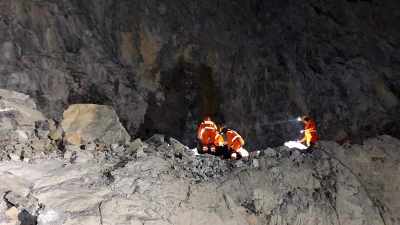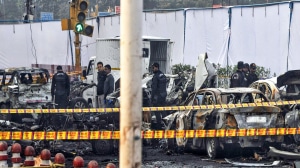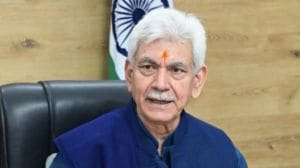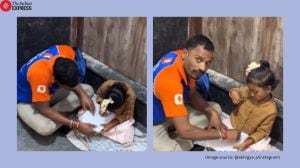Adding up Bengal
Muslims constitute about a quarter of the total population in West Bengal. After Jammu and Kashmir...

Muslims constitute about a quarter of the total population in West Bengal. After Jammu and Kashmir (67 per cent) and Assam (31 per cent), West Bengal has the highest proportion of Muslim population. With 20.2 million Muslims, the state also accounts for about 15 per cent of the total Muslim population in the country.
While Muslims are spread out across the state, there are a number of pockets with a high concentration of Muslim population. Of the state’s 18 districts, there are at least 10 districts where Muslims constitute a quarter or more of the total population of the district. In three districts — Murshidabad (63 per cent), Malda (49.7 per cent) and Uttar Dinajpur (47.4 per cent) — the proportion is even higher. In these 10 districts where Muslims constitute about one-fourth of the total population, there are 140 assembly constituencies out of the total of 294. In other words, in about half the total number of assembly constituencies in the state, Muslim votes are crucial. It is thus clear that Muslims carry sufficient demographic weight to influence the electoral game of political parties in West Bengal.
How have Muslim voted in the past decades? Is the Left heavily dependent on the Muslim vote bank to perpetuate its rule in the state? Is the Left wary of shifting its support base among Muslims? A look at the vote share of the Left in these 10 districts might give us some clues about how Muslims have voted for the Left. In 2001 assembly elections, the Left had secured 49 per cent of votes polled in the state. There were only four districts out of 10, where the vote share of the Left was more or less equal to its overall average. Again in 2006, there were only four districts out of 10 where the party matched its overall vote share. But this is not to say that Muslims had not voted for the Left in the other six districts.
While party wise performance in an individual district or constituency does not help us assess how Muslims have voted for different political parties in the state in the last few elections, findings of a survey conducted by the Center for the Study of Developing Societies would, to some extent, could be illuminating.
A cursory look at the proportion of Muslim votes to total votes polled by the Left in many past elections unfolds a story that indeed encompasses commonsense. Overall, Muslims have not voted for the Left disproportionate to their share in the total population. Muslims constitute 25 per cent of the total population in West Bengal. In 2001, Muslims accounted for about 27 per cent of total votes polled by the Left. If we consider the 2001 assembly election as the base, the share of Muslim votes in the votes of the Left has been on the decline. For example, in the 2004 Lok Sabha elections and the 2006 assembly elections, Muslim votes accounted for about 24 and 23 per cent of the Left’s total vote. Thus two things emerge out of this. One, the support of Muslims to the Left is not much beyond their proportion to total population of the state. Second, even this much support of Muslims to the Left is gradually waning. One might ask: if Muslims are not so solidly behind the Left, then why is the Left then slow to deal with the rubble rousers?
One simple reason is that even if a large chunk of Muslims do not vote for the party, yet the existing support base of the community is crucial for the comfort as being enjoyed by it. Following the Sachar Committee Report, the Left got caught in a face saving situation for pathetic socio-economic affairs of Muslims in the state. The Nandigram episode has already added much fuel to the anger of the Muslim community. This is what the party seems to be wary about. Given this, the Left has no option but to cajole the so-called Muslim leadership to stop further erosion in the community. Given this, the party cannot go further to upset the voters of the community. This explains why the Left bowed down to the self-proclaimed guardians of Islam and Muslims as well on the Taslima Nasreen episode recently.
Sanjay Kumar is a fellow at Centre for the Study of Developing Societies (CSDS) Delhi. Sanjeer Alam is associate fellow with Lokniti, CSDS






- 01
- 02
- 03
- 04
- 05

























